
Gone with the Wind is a novel by American writer Margaret Mitchell, first published in 1936. The story is set in Clayton County and Atlanta, both in Georgia, during the American Civil War and Reconstruction Era. It depicts the struggles of young Scarlett O'Hara, the spoiled daughter of a well-to-do plantation owner, who must use every means at her disposal to claw her way out of poverty following Sherman's destructive "March to the Sea." This historical novel features a coming-of-age story, with the title taken from the poem "Non Sum Qualis eram Bonae Sub Regno Cynarae", written by Ernest Dowson.
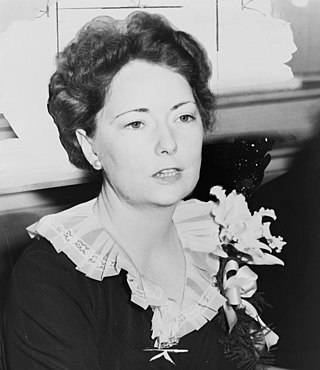
Margaret Munnerlyn Mitchell was an American novelist and journalist. Mitchell wrote only one novel that was published during her lifetime, the American Civil War-era novel Gone with the Wind, for which she won the National Book Award for Fiction for Most Distinguished Novel of 1936 and the Pulitzer Prize for Fiction in 1937. Long after her death, a collection of Mitchell's girlhood writings and a novella she wrote as a teenager, titled Lost Laysen, were published. A collection of newspaper articles written by Mitchell for The Atlanta Journal was republished in book form.

Katie Scarlett O'Hara is a fictional character and the protagonist in Margaret Mitchell's 1936 novel Gone with the Wind and in the 1939 film of the same name, where she is portrayed by Vivien Leigh. She also is the main character in the 1970 musical Scarlett and the 1991 book Scarlett, a sequel to Gone with the Wind that was written by Alexandra Ripley and adapted for a television mini-series in 1994. During early drafts of the original novel, Mitchell referred to her heroine as "Pansy", and did not decide on the name "Scarlett" until just before the novel went to print. PBS has called O'Hara "quite possibly the most famous female character in American history..."

George Ashley Wilkes is a fictional character in Margaret Mitchell's 1936 novel Gone with the Wind and the 1939 film of the same name. The character also appears in the 1991 book Scarlett, a sequel to Gone with the Wind written by Alexandra Ripley, and in Rhett Butler's People (2007) by Donald McCaig.

Rhett Butler is a fictional character in the 1936 novel Gone with the Wind by Margaret Mitchell and in the 1939 film adaptation of the same name. It is one of Clark Gable's most recognizable and significant roles.

Melanie Hamilton is a fictional character first appearing in the 1936 novel Gone with the Wind by Margaret Mitchell. In the 1939 film she was portrayed by Olivia de Havilland. Melanie is Scarlett O'Hara's sister-in-law and eventually her best friend. Mitchell likely based the character on her cousin Sister Mary Melanie Holliday.
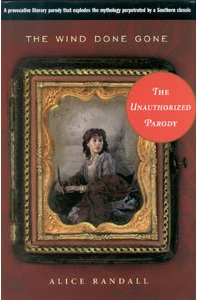
The Wind Done Gone (2001) is the first novel written by Alice Randall. It is a historical novel that tells an alternative account of the story in the American novel Gone with the Wind (1936) by Margaret Mitchell. While the story of Gone with the Wind focuses on the life of the daughter of a wealthy slave owner, Scarlett O'Hara, The Wind Done Gone tells the story of the life of slaves through Cynara, an enslaved woman during the same time period and events.

Mary Alicia Rhett was an American actress and portrait painter who is best remembered for her role as India Wilkes in the 1939 epic film Gone with the Wind. At the time of her death, Rhett was one of the oldest surviving credited cast members of the movie.
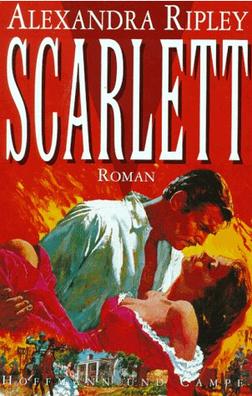
Scarlett is a 1991 novel by Alexandra Ripley, written as a sequel to Margaret Mitchell's 1936 novel, Gone with the Wind. The book debuted on TheNew York Times Best Seller list.
Tara is a fictional plantation in the state of Georgia, in the historical novel Gone with the Wind (1936) by Margaret Mitchell. In the story, Tara is located 5 miles (8 km) from Jonesboro, in Clayton County, on the east side of the Flint River about 20 miles (32 km) south of Atlanta.
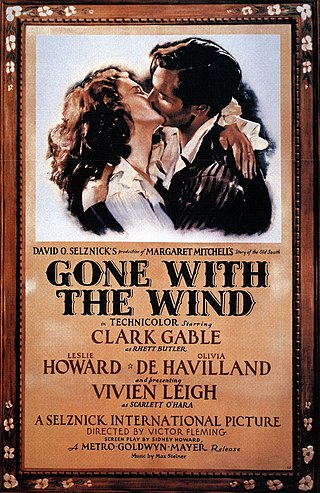
Gone with the Wind is a 1939 American epic historical romance film adapted from the 1936 novel by Margaret Mitchell. The film was produced by David O. Selznick of Selznick International Pictures and directed by Victor Fleming. Set in the American South against the backdrop of the American Civil War and the Reconstruction era, the film tells the story of Scarlett O'Hara, the strong-willed daughter of a Georgia plantation owner, following her romantic pursuit of Ashley Wilkes, who is married to his cousin, Melanie Hamilton, and her subsequent marriage to Rhett Butler.
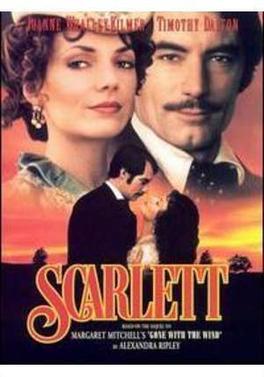
Scarlett is a 1994 American six-hour television miniseries loosely based on the 1991 book of the same name written by Alexandra Ripley as a sequel to Margaret Mitchell's 1936 novel Gone with the Wind. The series was filmed at 53 locations in the United States and abroad, and stars Joanne Whalley-Kilmer as Scarlett O'Hara, Timothy Dalton as Rhett Butler, and Sean Bean as Lord Richard Fenton. The miniseries was broadcast in four parts on CBS on November 13, 15, 16, and 17, 1994.

Gone with the Wind is a musical written by Margaret Martin. It was adapted by Trevor Nunn from Margaret Mitchell's 1936 novel of the same name and its 1939 film adaptation.
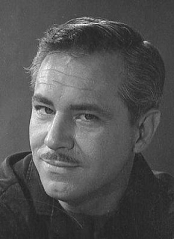
Herman Frederick Crane was an American film and television actor and radio announcer. He is probably best known for his role as Brent Tarleton in the 1939 film, Gone with the Wind, speaking the opening lines in the movie during the opening scene with Scarlett O'Hara and Stuart Tarleton.

Stately Oaks Plantation is a Greek Revival antebellum mansion located in Margaret Mitchell Memorial Park in Jonesboro, Georgia. Built in 1839, the house was listed on the National Register of Historic Places in 1972. It is also known as Orr House, The Oaks, and Robert McCord House and it is included in the Jonesboro Historic District.

The Scarlett O'Hara War is a 1980 American made-for-television drama film directed by John Erman. It is based on the 1979 novel Moviola by Garson Kanin. Set in late 1930s Hollywood, it is about the search for the actress to play Scarlett O'Hara in the much anticipated film adaptation of Gone with the Wind (1939). This film premiered as the finale of a three-night TV miniseries on NBC called Moviola: A Hollywood Saga.

Autant en emporte le vent is a French musical adaptation of the 1936 Margaret Mitchell novel Gone with the Wind produced by Dove Attia and Albert Cohen in 2003, with music and lyrics by Gérard Presgurvic and staging and choreography by Kamel Ouali. The production is said to be a "musical spectacular" that gives "the black characters greater voice, in song and dance, [to express] their desire for freedom."

"Went with the Wind!" is a comedy sketch featured on the eighth episode of the tenth season of The Carol Burnett Show. It originally aired in the United States on CBS on November 13, 1976, and is a parody of the 1939 American historical drama film Gone with the Wind. The sketch was written by two young writers, Rick Hawkins and Liz Sage. In 2009, TV Guide ranked the sketch #53 on its list of "Top 100 Episodes of All Time".
Annie Elizabeth Fitzgerald Stephens was an American landowner, businesswoman, and political activist. She was born to a prominent planting family in Clayton County, Georgia, and grew up on the family plantation Rural Home. The daughter of an Irish immigrant, she was a devout Catholic. Stephens was involved in real estate endeavors in Atlanta and sued the federal government after General William Tecumseh Sherman's Siege of Atlanta, during the American Civil War, damaged some of her properties. Some historians, literary critics, and film critics, including Molly Haskell, consider her to be the inspiration behind the fictional character Scarlett O'Hara, from Stephens' granddaughter Margaret Mitchell's novel, Gone with the Wind.

Eugene Muse Mitchell was an American lawyer, politician, and historian. He served as the President of the Atlanta Board of Education from 1911 to 1912, during which time he eliminated the use of corporal punishment in city schools. He owned a law firm in Atlanta, and was a co-founder of the Atlanta Historical Society. He was married to the prominent Catholic activist and suffragist Maybelle Stephens Mitchell and was the father of Margaret Mitchell, who wrote the novel Gone With the Wind.


















